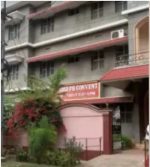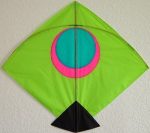By Mark Joeverth Rafael Zamora
Manila, Jan 11, 2020: Growing up in a diverse family is like a roller coaster ride. There would be ups and downs in the journey, but the togetherness in every struggle is what matters for me.
But that was before.
It has been years since my mom (Indian) went to Singapore for good to further establish our business. On the contrary, my father (Filipino), after years of working in the Middle East, is finally home. I would always love to reminisce my childhood with my mom and dad together.
Living in an Indian-Filipino family, it is not easy to grasp two different cultures at the same time. There were times when confusion dazes me due to contrasting beliefs.
Amirah, my mother, fully embraces Indian culture and traditions even though she is far away from India. She is living with my brothers Prince Abdul Wahab and Duke Kalil in Singapore.
Residing in Manila, the Philippines, by myself, I study hard and hope that we will be together again one day. Though my mom is afar, I can always trace my cultural roots and the diversity that runs through our family.
In my encounter with India, I was amazed by the rich culture that emanated deep within ancient civilizations. From the detailed outfits, abundance in pieces of jewelry, rich history and various religious practices, it makes me feel proud that our ancestors established this culturally rich nation.
Similarly, I am grateful to live in the Philippines having beautiful landscapes, amazing beaches, rich biodiversity and friendly people.
As I live in the Philippines, I notice the presence of people of Indian descent. Locally known as “Bumbai”, they usually focus on selling items as well as loaning businesses as part of an informal economy.
Their presence throughout the country makes me feel the Indian vibe hence the country, which where I long to be.
Connecting two different cultures
What amazed me growing up with two different cultures is that as I analyze these differences, there were connections that have been forged long ago.
I was shocked in my discoveries, knowing that India and the Philippines share common words, ancient writing system, and religious matters.
Baybayin, the ancient writing system of the Philippines, is of Brahmin’s influence. The alpha-syllabary dates back to pre-Hispanic Philippines as documented by Spanish writers.
Indirect contacts through the Sri Vijaya civilization that took place in Southeast Asia opened the sharing of Indian words, as evident in the Laguna Copperplate Inscription, a government document inscribed in a copperplate.
It would date back to as early as the 9th century, found in a river in Lumban, Laguna in 1918. The first three sentences of the inscription are transcribed as follows:
“Swasti! Shaka warshatita 822 waisakha masa ding jyotisha. Chaturthi krishna paksha somavara sana tatkala Dayang Angkatan lawan dengannya sanak barngaran si Bukah, anakda dang hwan Namwaran di bari waradana wi shuddhipattra ulih sang pamegat senapati di Tundun barjari dang hwan nayaka tuhan Pailah, Jayadewa….”
(Hail! In the Saka-year 822; the month of March-April; according to the astronomer: the 4th day of the dark half of the moon; on Monday. At that time, Lady Angkatan together with her relative, Bukah by name, the child of His Honor Namwran, was given, as a special favor, a document of full acquittal, by the Chief and Commander of Tundun, the former Leader of Pailah, Jayadewah.)
As of now, I can still distinguish Filipino words of Indian influence such as budhi (conscience), guro (master), sutla (thread), saksi (witness), katha (to invent), mukha (face), dukha (suffering), bahagi (portion), yaya (nanny), maharlika (rich or prosperous), bathala (noble lord), tala (star), etc.
Religion-wise, a Sivaite image that was found in Butuan called the Golden Tara reveals the religious connection of the Philippines and India adopted from the Majapahit Empire.
Showcasing Hindu faith, I was astounded knowing that India has an astonishing cultural expansion.
Applying the essence of multiculturalism
Apart from being a journalism student, it is my passion to study languages. I am studying the Austronesian language group which includes the languages of Madagascar up to Hawaii, the world’s most far-spread language family.
In my high school studies, I also learned Korean and Spanish. I have been investing years in studying languages, knowing that this would help me in my career in the future. As of now, I study Hindi, which I should have started long ago.
Others say that it is hard to study languages since it requires time and immersion to do it. In my case, I study online through the help of online lectures and immerse myself in watching movies, listening to songs, reading books, of which language I study.
Religious diversity: borders of faith
Believe me or not, my parents and siblings are Muslims. But since I converted to Christianity in the Iglesia Ni Cristo (Church of Christ) in the Philippines, I also convinced my father and my sister to convert in the church.
I now live in a Muslim-Christian family, which is Indian-Filipino too. Quite varied is not it? But this diversity, the difference among us, is what enriches our family.
Despite linguistic differences, cultural complexity, and varied religious affiliations, the bond and love we give to each other breaks the barriers of our identity.
We are now separated by distance, bordered by culture, and divided by religion. But one thing is for sure, love completes us as a whole.
For love is absolute, sans distance, sans language, sans culture, sans rationality.
(Mark Joeverth Rafael Zamora is a journalism student at the Polytechnic University of the Philippines, Manila).









